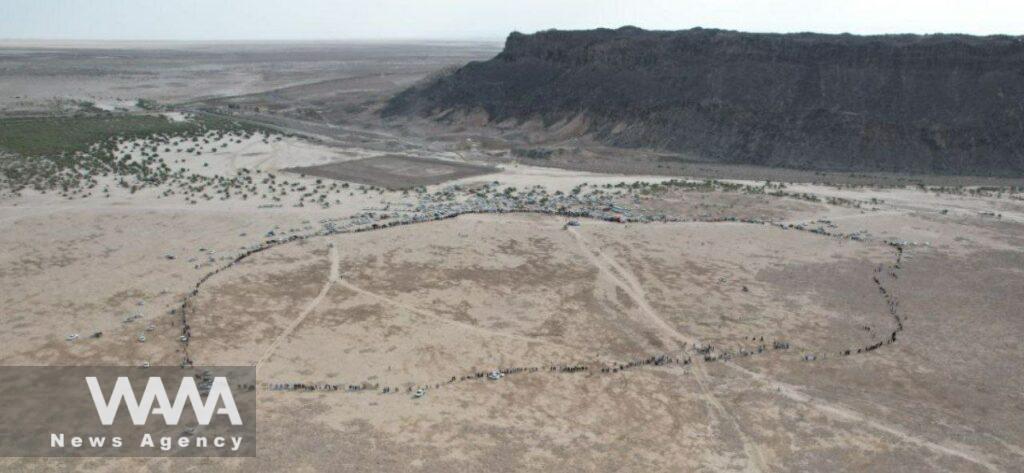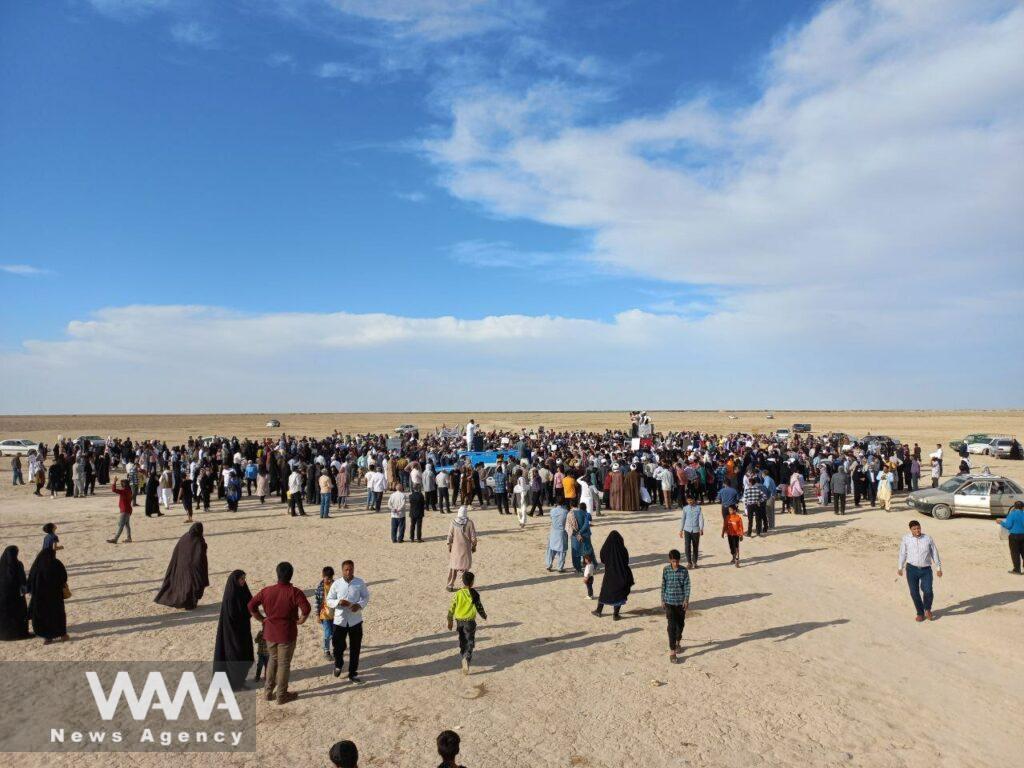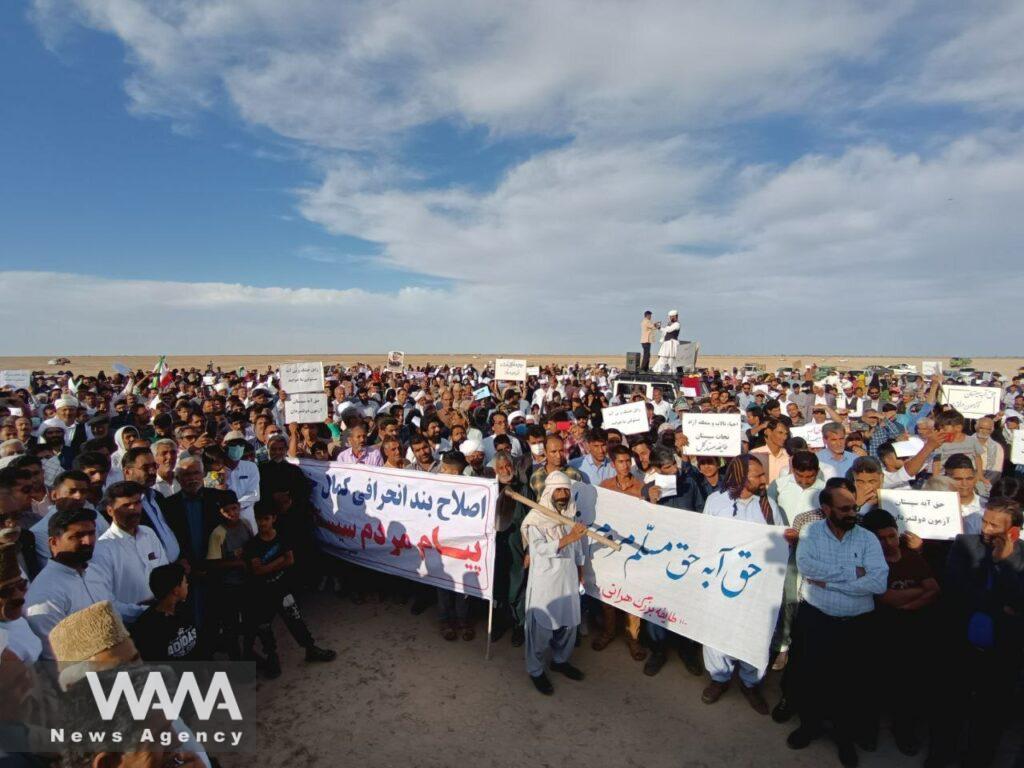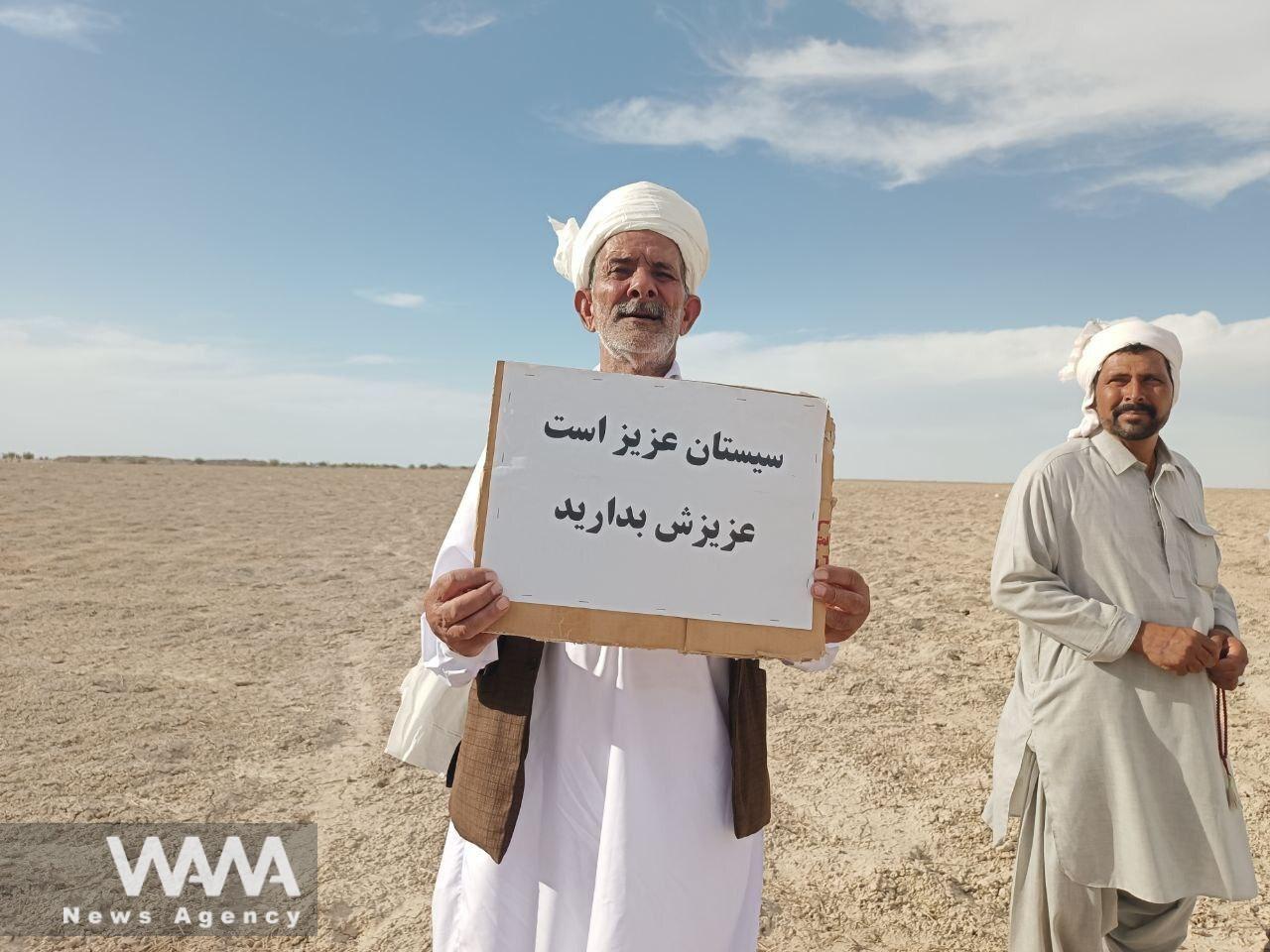Hirmand, A River For The Life of Two Nations
WANA (May 15) – With the blockage of the Hirmand River water path by Afghanistan and the following drought in the Sistan region of Iran, there has been a severe disorder in the lives of the people of this region. Many people have been forced to leave their hometowns and migrate to other provinces of Iran.
Hirmand is a large river from the Hindu Kush mountain range forty kilometers west of Afghanistan and flows into Hamon Lake in Iran. This river is one of the most abundant rivers in Asia, where billions of cubic meters of water flow annually. Also, 1,100 kilometers has made it the longest river between the Indus and the Euphrates.
The south part of the Hirmand River, which forms the river delta in Sistan, Iran, has an area of 18,200 square kilometers, 40% of which is in Iran. Rainfall in the Hirmand Delta is deficient, and the evaporation rate is very high; Therefore, the amount of water used for each hectare of agricultural land in this region has dramatically increased.

The human chain of Sistani citizens to save the Hamon Pond and request the water right of the Hirmand River. Social Media / WANA News Agency
It has caused the life of the local people of the Sistan region in Iran, who have been engaged in agriculture and animal farming for a long time, to become strongly dependent on Hirmand water.
The dispute over the use of Hirmand water between Iran and Afghanistan goes back to when the eastern borders of Iran were formed with the intervention of the British.
In 1872, during the division of Iran’s eastern borders, General Frederick Goldsmid, the British government agent, voted to divide Sistan into inner and outer Sistan.
Outer Sistan, a larger area with drinking water flow, was assigned to Afghanistan. Inner Sistan, with a smaller place but population density and agricultural land that needed more water, was given to Iran.
However, Frederick did not decide on the amount of benefit the two countries from Hirmand water at that time, which caused significant differences between the two countries and even affected their political relations in the last hundred years.

The human chain of Sistani citizens to save the Hamon Pond and request the water right of the Hirmand River. Social Media / WANA News Agency
The widespread refusal of the Afghan government to allow the Hirmand River to flow in Iran, the construction of reservoir and diversion dams on the Hirmand and the separation of numerous channels from it, and the many interventions of the British have considerably reduced the amount of water flowing towards Iran. So that in recent years, water does not reach the people of Sistan in Iran.
In the years after the Islamic Revolution, the Islamic Republic has always demanded the entry of Hirmand water into Iran through political channels. In this regard, last night, Iranian President Dr. Raisi issued a special mission to the Minister of Foreign Affairs and his representative in Afghanistan regarding the pursuit of Iran’s water rights from Hirmand.
“Following Hirmand’s water right is one of the important priorities of the government in Sistan and Baluchistan, and in this regard, the government will use all its efforts.” Mehrabian, Iran’s Minister of Energy, said.
Different parts of the President’s government are holding serious consultations to return to the everyday life process in Sistan with the Hirmand water.

The human chain of Sistani citizens to save the Hamon Pond and request the water right of the Hirmand River. Social Media / WANA News Agency
“According to the international treaty, 820 million cubic meters of water from Hirmand should come to Iran, but last year only 27 million cubic meters of water entered Iran.” Kazemi, Special Representative of the President for Afghanistan Affairs and Iran’s Ambassador, stated.
The Taliban’s foreign minister recently said, “The Taliban recognizes Iran’s water’s right to Hirmand.”
The cooperation of the Afghanistan-based government plays a vital role in achieving a result in this case. After two years of coming to power in Afghanistan, the Taliban has yet to form a ubiquitous state, so this country’s international relations with other countries do not take a standard form.












